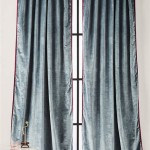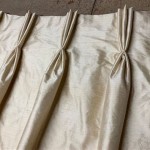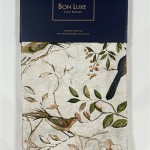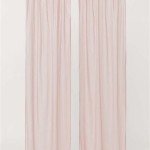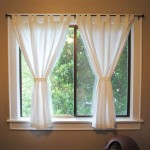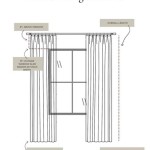Strips of Fabric for Curtains: A Versatile and Stylish Design Element
Strips of fabric, or fabric banding, have become a popular and versatile design element in the world of curtains. From classic to contemporary, these strips can dramatically impact a curtain's aesthetic appeal, adding texture, color, and visual interest. This article explores the various ways fabric strips can be used for curtains, highlighting their benefits and providing inspiration for your own design projects.
Defining Fabric Strips for Curtains
Fabric strips for curtains, also known as banding, are narrow pieces of fabric sewn onto the edge or across the surface of a curtain panel. They can be made from various materials, including cotton, linen, velvet, silk, and more. Fabric strips come in a wide array of colors, patterns, and textures, offering endless possibilities for customization.
The width of the strips can vary significantly, ranging from a few millimeters to several centimeters. The choice of width and the number of strips used depends on the desired aesthetic effect and the overall design of the curtain.
Benefits of Using Fabric Strips
Fabric strips offer a multitude of advantages when incorporated into curtain designs:
Enhancing Visual Interest
Fabric strips add a layer of texture and dimension to curtains. By creating horizontal or vertical lines, they can break up the monotony of a plain fabric, adding visual interest and drawing the eye. Contrasting colors or patterns can further enhance this effect.
Adding Style and Personality
Fabric strips can transform the overall style of a curtain. For example, a simple cotton curtain can be elevated to a more sophisticated look with the addition of velvet or silk banding. Similarly, a contemporary curtain can be given a classic touch with the use of traditional trims.
Adding Functionality
Fabric strips can also serve a practical purpose. They can be used to create a decorative border that prevents fraying, and they can also be sewn at the top of a curtain panel to create a more substantial header, adding weight and preventing the curtain from sagging.
Creative Applications of Fabric Strips
The possibilities for using fabric strips are virtually endless. Here are some creative applications:
Color Blocking
Strips of contrasting colors can be used to create a bold and graphic look. This is particularly effective when designing curtains with geometric patterns or modern aesthetics.
Pattern Play
Strips of patterned fabric can add a touch of whimsy and sophistication. Think polka dots, stripes, floral prints, or even abstract designs.
Texture Contrast
Combining different textures, like velvet and linen, can create a dynamic and tactile effect. This is an excellent choice for creating curtains with a luxurious feel.
Layered Looks
For a more intricate look, multiple stripes of different materials, colors, and widths can be layered together. This allows for greater creative expression and a unique personalized design.
Conclusion
Fabric strips are a versatile and stylish design element that can elevate the look of any curtain. From adding visual interest to creating unique textures and patterns, fabric strips are a great way to personalize your home decor. Experiment with different materials, colors, and widths to create curtains that reflect your individual style and taste.
Make A Diy Curtain From Scrap Fabric Techniques Annie Sloan
Do It Yourself
No Sew Rag Curtains
No Sew Rag Curtains Made By Marzipan
Window Valance Using A Jelly Roll 2 1 Strips The Crafty Quilter
12 Best Fabric Strip Curtains Ideas Strips Diy
Bohemian Gypsy Rag Curtains Outside United States Shipping Available Upon Request Etsy
Diy Waste Fabric Curtain That Can Become A Dress
Boho Curtain Rag Door Closet Boutique Vtg Linen Hippiewild Decor Room Divider In Stock Etsy
Fabric Strip Curtains Wedding Photo Props Backdrops

